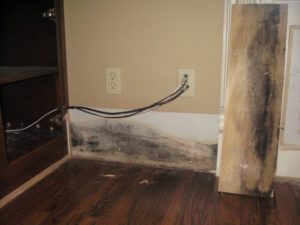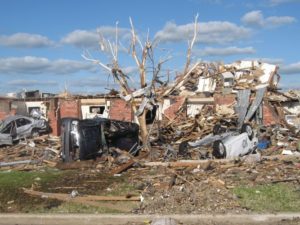You might think that a small patch of mold in your home is nothing to really worry about and that just a small patch growing in your home won’t require mold remediation. Mold looks harmless, but it can cause an array of health problems. On top of that, if left alone a small patch of mold can quickly spread into a household infestation. However, all mold is not created equal, and there are quite a few varieties of mold that can make your home their home.
Classifications Of Mold
Mold is broken down into 3 different classifications. When you detect mold in your home you should try to determine the type, and then determine under which classification it falls. Determining the type and classification will help guide you in the restoration and mold remediation process.
Allergenic Molds
This classification of mold is the most benign. Molds that fall under this category might not cause any obvious symptoms at all unless you happen to have a weak immune system. Any symptoms that do appear will manifest as allergies, like a runny nose, itchy throat and skin reactions. This type of mold can be easily removed by mold remediation professionals without extensive restoration.
Pathogenic Molds
This classification of mold is a bit more dangerous than allergenic mold, but not everyone will feel the effects of this mold’s presence. For those susceptible, this classification of mold can cause a lung infection that mimics the symptoms of bacterial pneumonia and can lead to difficulties breathing properly. Restoration of your house from this mold is a bit more involved.
Toxigenic Molds
These molds are the most dangerous type of mold, and can be deadly to you and your family if you are exposed to them long enough. In order to fall under this classification, the mold must produce a harmful chemical known as mycotoxins. Mycotoxins, when inhaled or ingested, can lead to cancer suppression of the immune system and eventual death. Extreme restoration and mold remediation is required if you have this type of mold due to its life-threatening effects.
Most Common Household Molds
Although a huge variety of mold exists in the world, so many that the experts think there may be as many as 300,000 different varieties, there are a few common types of mold that usually sprout up in your home.
Aureobasidium
This mold commonly grows outside in compost piles or dead foliage, but it is also found indoors. This type of mold causes respiratory problems, most commonly if you have an immunodeficiency, but can also cause problems in generally healthy individuals. It can lead to respiratory failure if you are exposed to it long enough.
Cladosporium
This type of mold is particularly bothersome because unlike other molds, it doesn’t need warmth to flourish. This type of mold can grow in cool temperatures just as well as it can grow in warm areas. It can grow on almost any type of material, including woods and fabrics. This type of mold also leads to respiratory problems, but exposure is rarely fatal.
Fusarium
Fusarium can also grow in cool temperatures but needs a nice damp area to grow. It is commonly found in carpeting that has been exposed to water and not properly dried out. This mold produces allergic reactions and can cause asthma in otherwise healthy individuals.
Stachybotrys Chartarum
You might know this mold by the name black mold. It is slimy and dark in appearance and is often the mold most thought about when people talk about toxic mold. This type of mold falls under the classification of toxigenic molds. Not only can it cause respiratory problems and cancer, it can also induce debilitating lethargy and depression.
If you detect any type of these molds in your home you should ask about mold remediation immediately. Call Reset Restoration today at (918) 582-7373.
If your Tulsa home or business has suffered significant mold damage, please contact Reset Restoration today and request a free quote. Follow Reset Restoration on Facebook!




